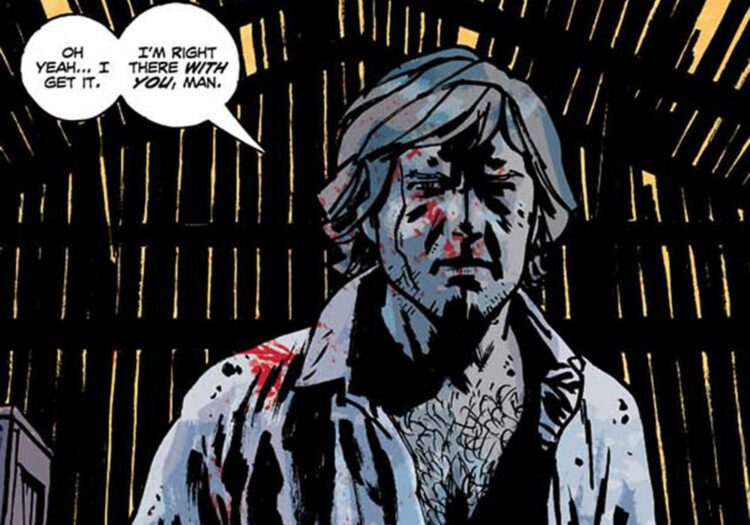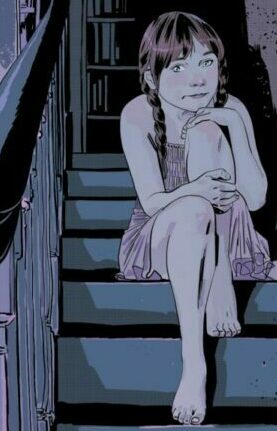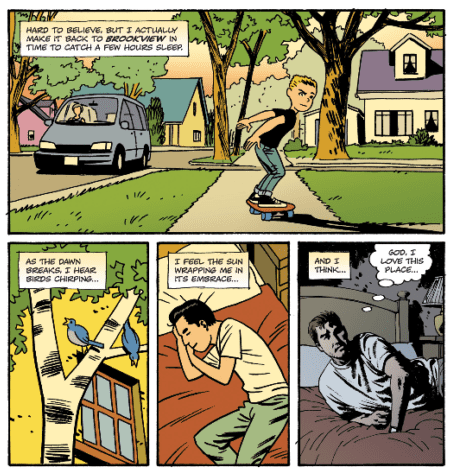Next to me, I have a stack of comics that’s about a foot high. Volumes of Kill or be Killed, Criminal, Sleeper, and The Fade Out. These comics cover a range of subjects: a vigilante in New York being hounded by a demon, a seedy crime world that no one seems to inhabit by choice, gritty superheroes, the underbelly of old Hollywood… But there are two names that tie all of these stories together. Those names are Ed Brubaker and Sean Phillips. Many would tell you that these two are the kings of noir comics. They would be right.
In fact, despite the size of the stack next to me, I can’t help but think about the comics they’ve done that I don’t have. That’s how good writer Brubaker and artist Phillips are. They’ll get you hooked, and you’ll spend the rest of your days waiting for Brubaker’s Substack newsletter announcing their next project. But what makes them such an effective creative team? Why is there almost something magical about their works?
Well, if you ask me, there are a few things that this team does that they seem to do better than everyone else.
The Sins of the Father
First off, one of the draws to the comics of Brubaker and Phillips is that they seem connected in a lot of ways. The stories may happen in different universes, across different time periods, in vastly different genres, but they touch on a lot of the same themes. Probably the biggest theme this team comes back to is the idea of how “the sins of the father are to be laid upon the children.” For instance, their anthology series Criminal follows a cast of characters that seem stuck in a life of crime. Part of the reason they’re all stuck is because many of them are second generation criminals. It was their parents who taught them the craft. Now, they don’t know anything else.
At the center of the events of Criminal stands Teeg Lawless — an abusive, self destructive wreck of a father. He’s the source of chaos and heartbreak even long after his death. But it’s not just in the pages of Criminal that we see these themes. In Kill or be Killed, we meet Kira, whose mother had orgies in front of her when she was only a kid. In The Fade Out, we see the innocence of children traded for roles in big movies. In Reckless, Ethan Reckless seems to define his whole life in contrast to that of his father.
But the way Brubaker and Phillips communicate the deep woundedness of their characters is surprising.

Playing Against the Moment
Instead of telling us how sad they are, the characters in Brubaker/Phillips books tend to do quite the opposite. They tell us they’re okay. They assure us that they’re fine.
Perhaps the best example of this is Kira from Kill or be Killed — as mentioned above — recalling her mother’s orgies. She doesn’t say it scarred her to see her mother surrounded by a mass of twisting, naked bodies. No, Kira says how beautiful and serene her mother looked. She talks about that moment as being a moving thing. Brubaker’s narrations are always full of people downplaying or putting a positive spin on their trauma. You can’t really judge them for it, though. Don’t we all do that?
Phillips draws Kira’s preteen face with a gentle smile. She looks intrigued and unbothered. She’s resting her chin on her knee, two braids framing her face. You’re completely aware of the fact that this is a child witnessing all of this. The opposite page, Phillips populates with the overlapping naked bodies of people who almost don’t seem to notice the others are there. They’re a means to an end to each other, with no emotional connection happening between them. In the pages of Kill or be Killed, we see Kira disastrously take this view of love into her adult life.

There are plenty more characters like this. Characters who don’t want to face the pain or abuse they’ve learned to live with. And after Brubaker has them persuade us that they are undamaged, we see them do all kinds of things that they know is bad for them. They live their lives at the bottom of a bottle, shoot up with heroin, or have soulless sex with people they hate. Phillips depicts their faces as emotionless or distant. Many of them will only ever show anger in their expressions, if that. A smile, or even the honesty of a frown, is rare. They’re self-destructive and their actions prove their nonchalant inner monologues false.
Celebrations in Style
But that’s only the tip of the iceberg when it comes to a Brubaker/Phillips joint. Their comics are as entertaining as they are moving. The vast majority of the time, you can count on one of their books to include an unabashed celebration of pop culture. Several of the arcs in Criminal reference other kinds of comics to tell their story. The main character of the arc Bad Night is a cartoonist who does a comic strip that looks exactly like Dick Tracy. The Tracy-esque character pops up throughout the story, talking like your typical private eye. In The Last of the Innocent, half of the story is told like an Archie comic. The childhood memories of the characters are shown in the sunshiny simplicity of a Double Digest. Reckless and The Fade Out are full of references to old movies. Sci-fi magazines show up in Kill or be Killed. Pulp celebrates the old dime novels of the 30’s and 40’s.
And one of the things that’s so cool about these references is that they’re deliberately obvious. Brubaker and Phillips aren’t trying to lift things from Bob Montana or Chester Gould. They’re reminding us of how cool these works are. They’re showing us that you wouldn’t be reading the comics you’re reading now if these creators hadn’t paved the way.

It’s also so cool to see Phillips jump around in these styles. The fact that he can go from the gritty feel of his usual art to the cartoony splendor of an Archie reference without skipping a beat shows what a versatile and capable artist he is. I’ve spent plenty of time scouring the pages of some of these books — looking for other artists in the credits, convinced there’s no way these pages were drawn by the same guy — only to find that it was all indeed done by Phillips. But even in his usual forms, Phillips has a brilliant juxtaposition of style going on. The thick linework on the faces of his characters is often contrasted to the thin pencils of their shirts or the painted atmospheric look of their environments. Phillips, for lack of a better way of putting it, is the best show-off in comics.
Conclusion
If you somehow haven’t begun reading the works of Brubaker and Phillips, I honestly envy you. There’s so much to discover. And in the mountains of work that they’ve done together, I can’t think of a single book that feels like a dud. Even their one-off singles in stuff like Hawkman or Batman stand out as incredible examples of what a comic can be. So please, do yourselves a favor and check these guys out if you haven’t yet. Or dive back in if it’s been a while. Brubaker and Phillips are an addiction waiting to happen.

